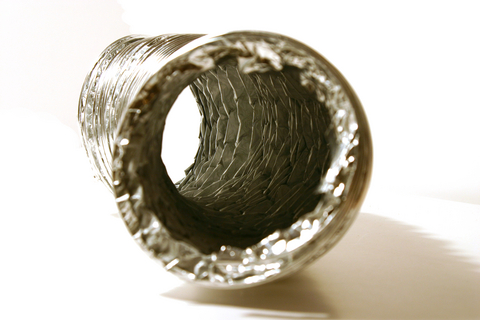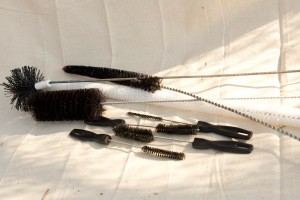 Carbon Monoxide
Carbon Monoxide
Carbon Monoxide is created as a combustion product in gas dryers. In the case of gas dryers, it is important to make sure that the vent is clean and not clogged, so that carbon monoxide will be vented outside of the house, not inside.
Digital Anemometer
This is a device used to measure airflow. Wizway always takes a reading before and after a duct cleaning.
Developed Length of Vent
This calculation is based on the combination of lengths of straight pipes and elbows. It should be 25 feet or less. 90 degree elbows count as 5 feet and 45 degree elbows count as 2.5 feet.
Dryer Exhaust System (aka Dryer Vent)
The pipes, elbows, and cap that comprise the entire system that moves the moist air and lint out of the dryer and into the atmosphere.
Dryer Lint Trap
This is where the majority of the lint collects during a drying cycle. It is very important to clean it before or after every drying cycle to maintain its efficacy. Also, if dryer sheets are used regularly, a film can develop on the lint trap resulting in less airflow and therefore less effectiveness. If dryer sheets are used on a regular basis, the lint trap should periodically be cleaned with a brush and soap and water to remove the film.
Dryer Vent Clamp
This clamp is usually made of stainless steel and is used to connect the transition tube to the dryer and the vent.
Dryer Vent Cover
The end point of the exhaust system, vent covers are usually louvered and either white or brown in color.
Dryer Vent Kit
Contains two swivel-type elbows and 3 feet of 4″ metal piping that is corrugated and semi-rigid.
Duct Pipe
This is the same as the vent pipe. If the pipe is inside a wall, it is required by code to be rigid metal pipe. Flexible pipe should only be used where it is visible.
Elbows
Elbows are used in dryer venting to turn the duct to reach its exterior end point. They are either 45 or 90 degrees depending on the location of the dryer in relation to the exit point. The more elbows that are used in your exhaust system, the less efficient the system, and the more likely that there will be a build-up of lint.
 Rotary Brush
Rotary Brush
This is a brush that travels the length of the dryer vent cleaning the lint from the inside of the pipe.
Termination Point
This is the end of the dryer exhaust system, which is at the exterior of the structure – either a side wall or the roof. It should not be in an enclosed space, such as a garage, attic, or basement.
Transition Duct or Transition Tube
A pipe that is connected at one end to the dryer and the other end to the exhaust system. It should be made out of aluminum or another non-flammable material. It should also be as short as possible to prevent it from being crushed and also to reduce the buildup of lint.